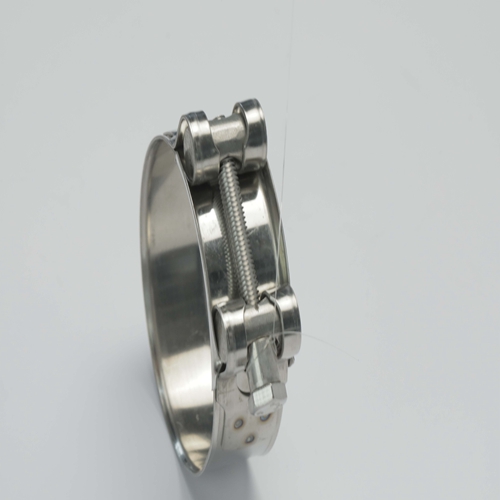- Phone:+86-17331948172 +86-0319-8862898
- E-mail: inquiry@puxingclamp.com
Dec . 05, 2024 10:47 Back to list
stainless worm gear hose clamp factory
Stainless Worm Gear Hose Clamps A Comprehensive Overview of Their Manufacture and Use
In the world of industrial and automotive applications, the significance of reliable fastening solutions cannot be overstated. Among these, stainless worm gear hose clamps stand out as a staple choice for securing hoses, pipes, and tubes across various sectors. This article delves into the characteristics, manufacturing processes, and applications of stainless worm gear hose clamps, shedding light on why they have become a preferred choice for numerous projects.
What are Stainless Worm Gear Hose Clamps?
Stainless worm gear hose clamps are specialized fastening devices designed to secure hoses onto fittings, preventing leaks and ensuring a tight seal. The design consists of a stainless-steel band that encircles the hose, combined with an integrated worm gear mechanism that can be adjusted to tighten or loosen the clamp. The primary advantage of using stainless steel in their construction is its resistance to corrosion, heat, and rust, making these clamps perfect for various challenging environments.
Characteristics of Stainless Worm Gear Hose Clamps
1. Corrosion Resistance Stainless steel is inherently resistant to oxidation and corrosion, which is particularly important in applications involving fluids that may cause degradation of other materials.
2. Durability These clamps are designed to withstand high pressure and extreme temperatures, making them suitable for both automotive and industrial uses.
3. Adjustability The worm gear mechanism allows for precise adjustments, ensuring the clamp can be tightened or loosened as needed, accommodating variations in hose size or application requirements.
4. Ease of Installation Stainless worm gear hose clamps are user-friendly and can be installed with minimal tools, providing convenience to technicians and mechanics alike.
Manufacturing Process of Stainless Worm Gear Hose Clamps
The manufacturing of stainless worm gear hose clamps involves several crucial steps to ensure precision, quality, and consistency.
1. Material Selection Quality stainless steel (typically grade 304 or 316) is chosen based on the required specifications of the application. These materials provide the necessary strength and resistance to corrosion.
2. Forming the Band The stainless steel is cut into strips and formed into a circular band. This can be achieved using automated machinery that ensures uniformity in dimensions.
stainless worm gear hose clamp factory

3. Worm Gear Construction The worm gear mechanism, which consists of a screw and compatible gear, is fabricated. This part is critical as it allows for the adjustment of the clamp.
4. Assembly The formed band and the worm gear are assembled, often using welding or fastening techniques to ensure a secure connection.
5. Surface Treatment A final surface treatment may be applied to enhance corrosion resistance and improve aesthetics. This could include passivation or polishing.
6. Quality Control Each batch of clamps undergoes rigorous quality control testing to ensure they meet industry standards and perform as expected in their intended applications.
Applications of Stainless Worm Gear Hose Clamps
Stainless worm gear hose clamps are versatile and find applications in various industries
- Automotive Used to secure hoses in coolant systems, fuel lines, and air intake systems.
- Plumbing Essential for connecting pipes in water systems, ensuring no leaks occur at connection points.
- HVAC Employed to fasten hoses and ducts for heating, ventilation, and air conditioning systems.
- Marine Ideal for maritime applications due to their corrosion resistance, which protects against the harsh marine environment.
- Food and Beverage In the food industry, they are used for securing sanitary hoses where hygiene is paramount.
Conclusion
Stainless worm gear hose clamps are an indispensable component in a myriad of applications, bridging gaps between structural integrity and practical usability. Their manufacturing process ensures consistent quality, while their features provide exceptional performance in challenging conditions. Whether in automotive, plumbing, or industrial environments, these clamps continue to be the go-to solution for reliable fastening. Understanding their significance is vital for anyone involved in maintenance, manufacturing, or design, as the right clamp can make all the difference in ensuring safety and efficiency.
-
Large Stainless Steel Adjustable American Type Hose Clamp - Hebei Pux Alloy | Corrosion Resistance, Adjustable Design
NewsAug.03,2025
-
Large Stainless Steel Adjustable American Type Hose Clamp - Hebei Pux Alloy Technology Co., Ltd | Corrosion Resistance, Adjustable Design
NewsAug.03,2025
-
Premium Stainless Steel Strip Coil | Durable & Rust-Resistant
NewsAug.03,2025
-
Large Stainless Steel Adjustable American Type Hose Clamp - Hebei Pux Alloy Technology Co., Ltd
NewsAug.03,2025
-
Large Stainless Steel Adjustable American Type Hose Clamp - Hebei Pux Alloy Technology Co., Ltd
NewsAug.02,2025
-
Large Stainless Steel Adjustable American Type Hose Clamp - Hebei Pux Alloy Technology Co., Ltd
NewsAug.02,2025




